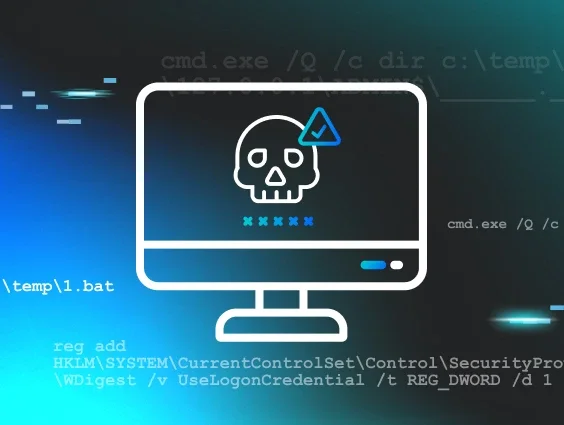When we think of cyber threats, malware, and phishing attacks often come to mind. However, not all threat actors stem from malicious code. Enter traitorware–a new and emerging category of cyber risks, where legitimate applications are hijacked and weaponized by hackers.
With the growing reliance on SaaS platforms and cloud-based services in businesses, hackers have identified new vulnerabilities, exploiting tools we trust every day. This post will explore what traitorware is, how hackers use it for their benefit, and what steps you can take to protect your systems from these silent intrusions.
What's Traitorware?
At its core, traitorware refers to the abuse of legitimate software applications by cybercriminals to carry out malicious activities. Unlike traditional malware, which is inherently malicious software, traitorware leverages pre-existing apps, tools, or services that were originally designed and developed for legitimate purposes. These applications are manipulated or exploited without being flagged as harmful, making them an ideal tool for stealthy attacks.
For example, in the context of Microsoft 365, hackers use OAuth (Open Authorization) to manipulate trusted applications and gain unauthorized access. This enables attackers to bypass security measures like multifactor authentication (MFA) while maintaining long-term access to inboxes and sensitive company data.
Why do hackers use traitorware?
Hackers prefer using traitorware for several reasons:
Legitimacy: Since the apps exploited by traitorware are genuine and widely trusted, they're unlikely to raise alarms within traditional security systems.
Stealthiness: By avoiding the need to install malicious software, hackers can hide their tracks and remain undetected for extended periods. This means they can slowly gain insights and strike at the most opportune time.
Persistent access: Once traitorware has been successfully set up, attackers can retain access to email accounts, files, and other privileged resources for months or even years.
This method ensures that cybercriminals stay one step ahead of traditional antivirus solutions, which focus primarily on detecting malware.
Sneaky ways the bad guys use Traitorware
Threat actors exploit traitorware through sophisticated and calculated strategies. Here's a step-by-step breakdown of how they accomplish this:
Step one: Initial access via phishing or misuse of permissions
Hackers begin by initiating access via traditional methods like phishing emails or exploiting weak permissions. They may trick users into granting permissions to an app they appear to trust, such as granting OAuth access to applications like EM Client or other email tools.
Step two: Delegating dangerous permissions
Once they gain initial access, attackers use OAuth to request sensitive permissions. These could include:
Full access to inboxes
Authority to read, send, or delete emails
Management of contacts and calendars
Users unknowingly approve such requests, and now hackers can enter systems under the guise of a trusted app.
Step three: Bypassing traditional security
One of the key features of traitorware attacks is bypassing multifactor authentication (MFA). Even if an account is protected by MFA, attackers with OAuth permissions can avoid the authentication layers altogether.
Step four: Siphoning data and maintaining persistence
With unchecked access in place, hackers can:
Siphon sensitive data, like emails, financial records, or intellectual property
Monitor internal communications for further exploitation
Escalate access privileges to gain control over more critical systems
Step five: Evading detection
Since traitorware operates through legitimate apps, it effectively hides in plain sight. Security tools often struggle to flag these activities as attacks because the “malicious” app is actually authorized by the victim’s account.
Real-life examples of Traitorware in action
Consider a scenario where a company employee unknowingly grants OAuth access to a malicious version of a commonly used email client. This app subtly collects sensitive emails and relays them to hackers. Over time, the attackers gain insights into the company's operations and exploit this knowledge to:
Launch targeted ransomware campaigns
Leak confidential information
Sabotage reputation and competitive advantage
The fact that this method functions without triggering any immediate security alerts makes it one of the most sinister types of cyberattacks today.
How to protect your organization from Traitorware
Now that you recognize the threat traitorware poses, the question becomes how to mitigate it. Here are a few best practices your organization should implement to stay secure:
1. Review app permissions regularly
Audit all the OAuth permissions granted by users to ensure no unnecessary or suspicious apps have access.
2. Implement identity threat detection
Use specialized tools, like Huntress' Managed ITDR (Identity Threat Detection & Response), that are designed to identify unauthorized access and rogue apps. These systems actively monitor for anomalies in permissions activity.
3. Educate users
Regularly scheduled security awareness training on avoiding phishing attacks and spotting sketchy application requests can make employees the first line of defense.
4. Restrict app permissions
Limit app permissions at a corporate level by enforcing policies that specify which apps are allowed access to enterprise accounts.
5. Leverage conditional access policies
Use conditional access policies in tools like Microsoft Azure or Microsoft 365, restricting when and how apps can interact with user accounts.
6. Monitor logs and alerts
Actively monitor sign-in logs and permission changes. Look for any data exfiltration patterns or unexpected permission delegations that could indicate suspicious activity.
7. Stay proactive with updates
Ensure your enterprise software is frequently updated. Many OAuth vulnerabilities occur due to outdated platforms that no longer meet the highest security standards.
The bottom line on Traitorware
While the term “traitorware” may sound like something from a spy thriller, its implications are very real for businesses around the world. Cybercriminals are evolving their methods quickly, leveraging legitimate tools against us in ways we least expect. The good news? With better awareness, proactive monitoring, and advanced cybersecurity tools, organizations can fight back. No business is immune, but every business has the power to strengthen its defenses.


Protect What Matters









